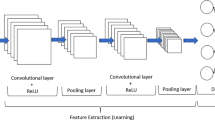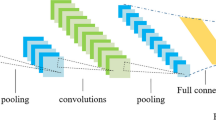Abstract
In the context of deep learning, this paper combines the arbitration mechanism to propose a GAN (Arbi-DCGAN) model based on the arbitration mechanism. First, the network structure of the proposed improved algorithm is composed of generator, discriminator and arbitrator. Then, the generator and the discriminator will conduct adversarial training according to the training plan and strengthen the ability of generating images and distinguishing the authenticity of the images according to the characteristics learned from the data set. Secondly, the arbitrator is composed of the generator, discriminator and measurement score computation module that have undergone the previous adversarial training. The arbitrator will feed back the results of the metric generator and discriminator adversarial training to the training plan. Finally, a winning limit is added to the network structure to improve the stability of model training, and the Circle loss function is used to replace the BCE loss function, which makes the model optimization process more flexible and the convergence state more clear. On the basis of geographic information system, this paper uses 325 meticulously annotated sample plans to establish a data set for deep learning, and trains the Arbi-DCGAN model to achieve the task of extracting land plots of different land types in the plan, as well as from the plane color block map to the color texture. The rendering and generation of the map complete the reconstruction task of the garden landscape. In addition, we further evaluate the results of the model's reconstruction of the garden landscape from the aspects of image quality, correct standardization and color expression. The training model has the potential to be applied to land type analysis and plane rendering in landscape architecture cases, helping designers improve the efficiency of analysis and drawing.


















Similar content being viewed by others
Data availability
Available on request.
References
Alqahtani H, Kavakli-Thorne M, Kumar G (2021) Applications of generative adversarial networks (gans): An updated review[J]. Arch Comput Methods Eng 28(2):525–552
Chen Y, Lai YK, Liu YJ (2018) Cartoongan: generative adversarial networks for photo cartoonization[C]. In: Proceedings of the IEEE conference on computer vision and pattern recognition. pp 9465–9474
Creswell A, White T, Dumoulin V et al (2018) Generative adversarial networks: An overview[J]. IEEE Signal Process Magaz 35(1):53–65
Gong X, Chang S, Jiang Y, et al (2019) Autogan: Neural architecture search for generative adversarial networks[C]. In: Proceedings of the IEEE/CVF international conference on computer vision. pp. 3224–3234.
Gupta A, Johnson J, Fei-Fei L, et al (2018) Social gan: Socially acceptable trajectories with generative adversarial networks[C]. Proceedings of the IEEE conference on computer vision and pattern recognition. pp 2255–2264.
He W (2021). Research on outdoor garden scene reconstruction based on PMVS Algorithm. Sci Program
Helbich M, Yao Y, Liu Y, Zhang J, Liu P, Wang R (2019) Using deep learning to examine street view green and blue spaces and their associations with geriatric depression in Beijing, China. Environ Int 126:107–117
Karras T, Laine S, Aila T (2019) A style-based generator architecture for generative adversarial networks[C]. Proceedings of the IEEE/CVF conference on computer vision and pattern recognition. pp 4401–4410.
Khattak GR, Vallecorsa S, Carminati F et al (2021) High energy physics calorimeter detector simulation using generative adversarial networks with domain related constraints[J]. IEEE Access 9:108899–108911
Li R, Xu D (2020) Distribution of landscape architecture based on 3D images and virtual reality rationality study[J]. IEEE Access 8:140161–140170
Liang J, Jiang L, Murphy K, et al (2020) The garden of forking paths: Towards multi-future trajectory prediction[C]. In: Proceedings of the IEEE/CVF conference on computer vision and pattern recognition. pp 10508–10518
Liu X, Wang X, Wright G, Cheng JC, Li X, Liu R (2017) A state-of-the-art review on the integration of Building Information Modeling (BIM) and Geographic Information System (GIS). ISPRS Int J Geo-Inf 6(2):53
Liu L, Zhang Y, Deng J et al (2021) Dynamically grown generative adversarial networks. Proc AAAI Conf Artif Intell 35(10):8680–8687
Liu Y, Fang C, Yang Z, et al (2021) Exploration on machine learning layout generation of Chinese private garden in southern Yangtze. The international conference on computational design and robotic fabrication. Springer, Singapore, pp 35–44. [17]
Lu X, Wang X, Wu R (2020) Urban Garden landscape design based on VR technology and internet of things system[J]. Microprocess Microsyst, 103432
Major J, Smith C, Mackay R (2018) Reconstructing landscape: Archaeological investigations of the royal exhibition buildings western Forecourt, Melbourne[J]. Int J Histor Archaeol 22(1):43–66
Mutasa S, Varada S, Goel A et al (2020) Advanced deep learning techniques applied to automated femoral neck fracture detection and classification[J]. J Digital Imag 33(5):1209–1217
Pamintuan KRS, Sanchez KM (2019) Power generation in a plant-microbial fuel cell assembly with graphite and stainless steel electrodes growing Vigna Radiata[C]//IOP conference series: materials science and engineering. IOP Pub 703(1):012037
Pouya S, Behbahani HI (2017) Assessment of the visual landscape quality based on the subjectivist paradigm to design the memorial garden[J]. Turkish J Forest 18(3):171–177
Qin P, Huang Y, Gan Y (2020) Protection and renewal strategy of historical remains landscape in urban reconstruction–a case study of guilin ring water system[c]//e3s web of conferences. EDP Sci 194:05042
Rossi L, Paolanti M, Pierdicca R et al (2021) Human trajectory prediction and generation using LSTM models and GANs[J]. Pattern Recogn 120:108136
Seber D, Vallvé M, Sandvol E, Steer D, Barazangi M (1997) Middle East tectonics: applications of geographic information systems (GIS). GSA Today 7(2):1–6
Shin YR, Yang J, Lee YH (2021) Deep generative adversarial networks: applications in musculoskeletal imaging[J]. Radiol Artif Intel 3(3):e200157
Wang H (2019) Landscape design of coastal area based on virtual reality technology and intelligent algorithm[J]. J Intell Fuzzy Syst 37(5):5955–5963
Wang X, Yu K, Wu S, et al (2018) Esrgan: Enhanced super-resolution generative adversarial networks[C]. In: Proceedings of the European conference on computer vision (ECCV) workshops. 0–0
Wei Z, Sun S, Ji X (2019) The inspiration of rainwater utilization of foreign sponge campus landscape planning for Beijing[C]//IOP conference series: earth and environmental science. IOP Publ 227(5):052019
Xu N, Luo J, Zuo J, Hu X, Dong J, Wu T, Wu S, Liu H (2020) Accurate suitability evaluation of large-scale roof greening based on RS and GIS methods. Sustainability 12(11):4375
Xu X, Zhang Y, Liden L, et al (2019) Unsupervised dialogue spectrum generation for log dialogue ranking[C]. In: Proceedings of the 20th annual SIGdial meeting on discourse and dialogue. pp 143–154
Yang Z, Chen Y, Le Z et al (2021) GANFuse: a novel multi-exposure image fusion method based on generative adversarial networks[J]. Neural Comput Appl 33(11):6133–6145
Yu H, Qian T, Liang Y et al (2020) AGTR: Adversarial generation of target review for rating prediction[J]. Data Sci Eng 5(4):346–359
Yu H, Qian T, Liang Y, et al (2020) Adversarial generation of target review for rating prediction[C]. In: International conference on database systems for advanced applications. Springer, Cham, pp 73–89
Zhang H, Xu T, Li H et al (2018) Stackgan++: Realistic image synthesis with stacked generative adversarial networks[J]. IEEE Trans Pattern Anal Mach Intell 41(8):1947–1962
Zhang W, Liu Y, Dong C, et al (2019) Ranksrgan: Generative adversarial networks with ranker for image super-resolution[C]. In: Proceedings of the IEEE/CVF international conference on computer vision. pp 3096–3105
Zhang Y, Zhou B, Cai X et al (2021) Missing value imputation in multivariate time series with end-to-end generative adversarial networks[J]. Inf Sci 551:67–82
Funding
Authors did not receive any funding.
Author information
Authors and Affiliations
Contributions
YC, is responsible for designing the framework, analyzing the performance, validating the results, and writing the article.
Corresponding author
Ethics declarations
Conflict of interests
Authors do not have any conflicts.
Ethical statement
This paper complies with the ethical standards of research and methodology.
Informed consent
It is not applicable.
Additional information
Dr. Nasir Saleem (GUEST EDITOR) / Dr. Michael Nones (CO-EDITOR-IN-CHIEF).
Rights and permissions
About this article
Cite this article
Cui, Y. Research on garden landscape reconstruction based on geographic information system under the background of deep learning. Acta Geophys. 71, 1491–1513 (2023). https://doi.org/10.1007/s11600-022-00831-6
Received:
Accepted:
Published:
Issue Date:
DOI: https://doi.org/10.1007/s11600-022-00831-6




